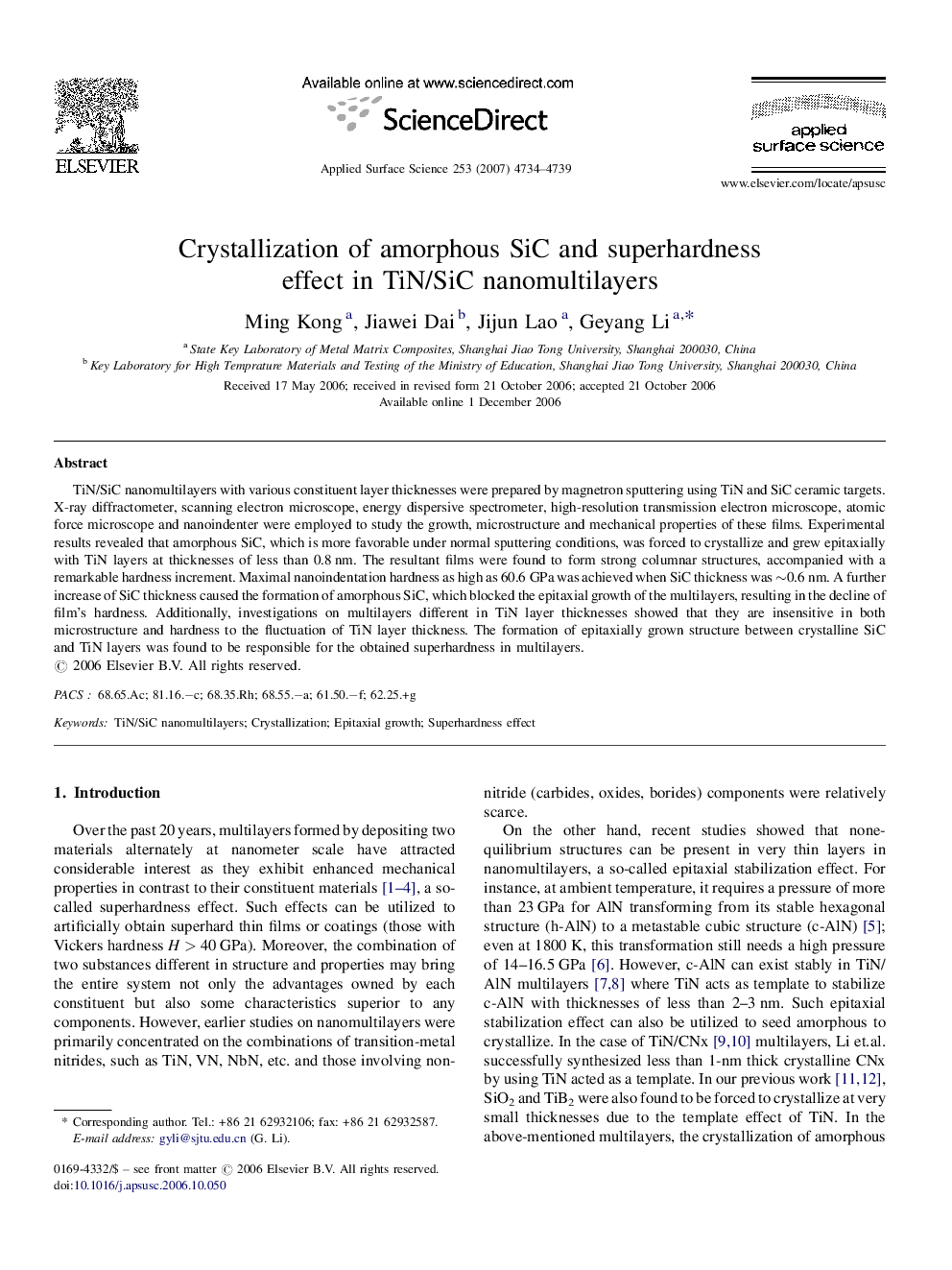| Article ID | Journal | Published Year | Pages | File Type |
|---|---|---|---|---|
| 5366040 | Applied Surface Science | 2007 | 6 Pages |
TiN/SiC nanomultilayers with various constituent layer thicknesses were prepared by magnetron sputtering using TiN and SiC ceramic targets. X-ray diffractometer, scanning electron microscope, energy dispersive spectrometer, high-resolution transmission electron microscope, atomic force microscope and nanoindenter were employed to study the growth, microstructure and mechanical properties of these films. Experimental results revealed that amorphous SiC, which is more favorable under normal sputtering conditions, was forced to crystallize and grew epitaxially with TiN layers at thicknesses of less than 0.8Â nm. The resultant films were found to form strong columnar structures, accompanied with a remarkable hardness increment. Maximal nanoindentation hardness as high as 60.6Â GPa was achieved when SiC thickness was â¼0.6Â nm. A further increase of SiC thickness caused the formation of amorphous SiC, which blocked the epitaxial growth of the multilayers, resulting in the decline of film's hardness. Additionally, investigations on multilayers different in TiN layer thicknesses showed that they are insensitive in both microstructure and hardness to the fluctuation of TiN layer thickness. The formation of epitaxially grown structure between crystalline SiC and TiN layers was found to be responsible for the obtained superhardness in multilayers.
